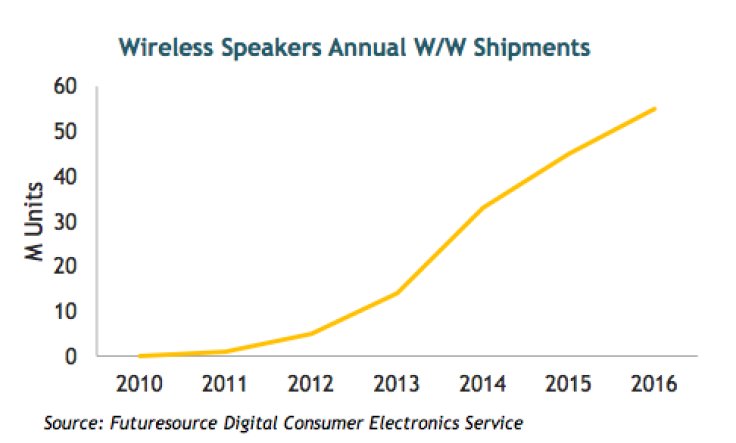Tidal Subscribers Love High-Quality Audio: Booming Market For Beats, Bose, Other Premium Headphones Could Drive Users
Before Jay Z and his famous partners acquired Tidal and attempted to rebrand it as a revolutionary business that would transform the music industry, the streaming music service had a much more modest pitch: all the music you love, delivered with superior sound quality.
Six months later, it sounds like that offer is the one that’s struck the chord among new Tidal users. More than 45 percent of the subscribers Tidal has added since its U.S. launch in March have signed up for Tidal’s so-called HiFi tier, which costs $20 per month and enables listeners to hear their music in a much-higher-quality, lossless format. In that time, Tidal has also aggressively stepped up its integrations into high-end audio devices, going from 35 partnerships in 2014, when it was a smaller service mostly available in Scandinavia, to more than 50 in 2016.
“It seems like sound is back on the map,” said Pål Bråtelund, a strategic partnerships manager at Tidal. “It doesn't make sense to live forever with sound quality that was created for a dial-up modem.”
Indeed, when music began to migrate from items like CDs, tapes and vinyl and onto computers and the Internet, sound quality plummeted as people sought sound files that were as small as possible to save on disk space. “You had a decade that sounded pretty awful,” Bråtelund said.
Today, with wireless broadband inching closer to ubiquity and smartphone penetration at over 75 percent in the United States, the need to skimp on bytes and audio bitrate have effectively been removed for consumers. As a result, people are embracing the opportunity to listen to music at a higher quality.
What may have most whetted their appetite for a better experience is their headphones. About five years after Beats Electronics turned its very flashy, very expensive Beats by Dre headphones into a must-have accessory, the market continues to boom. The market for premium headphones in the United States alone topped $1 billion in 2013, and it is projected to continue to grow healthily for the next few years, partly because people are spending more time listening and watching on the go.
“A lot of it has to do with more consumption time on [mobile] devices,” said Ben Arnold, an executive director and consumer electronics industry analyst at NPD. “That is a motivator to invest in a better pair of headphones.”
From iPhones To Headphones
Those developments have created a virtuous cycle: More people listening to more music on their phones decide to spend more money on their headphones, and they then get hooked on the higher-end sound and experience.
Those twinned tastes for better audio and better gear to generate it has fueled growth in the market for wireless speakers as well. According to Futuresource Consulting, worldwide shipments of wireless speakers are expected to top 60 million next year, just five years after worldwide shipments totaled fewer than 10 million.

While growth on that scale hasn’t been driven purely by premium-priced products, improvements in speaker technology have made it possible for consumers to get a top-shelf experience at a midlevel price.
“They can more easily afford a better audio quality experience than they could in the past,” said Jack Wetherill, senior market analyst at Futuresource. “Prices are coming down for sure.”
Wooing The Audiophile
Tidal is not the only service that can capitalize on a hunger for high-end sound. Spotify, one of its biggest competitors, offers an “extreme” audio setting that delivers music at 320 kilobits per second, an audio level that some people say is indistinguishable from the lossless audio that Tidal offers its HiFi subscribers.
And there’s nothing stopping Apple Music or Rdio or anybody else from upgrading the quality of the files it offers its users. “We're most surprised Apple hasn't,” Bråtelund said. “I'm sure all of them will come around eventually.”
By then, Bråtelund said, he expects Tidal will have built itself a stronger profile with other things, like comedy and original video.
“We would be a little bit proud if they came around and did it,” he said.
© Copyright IBTimes 2024. All rights reserved.











